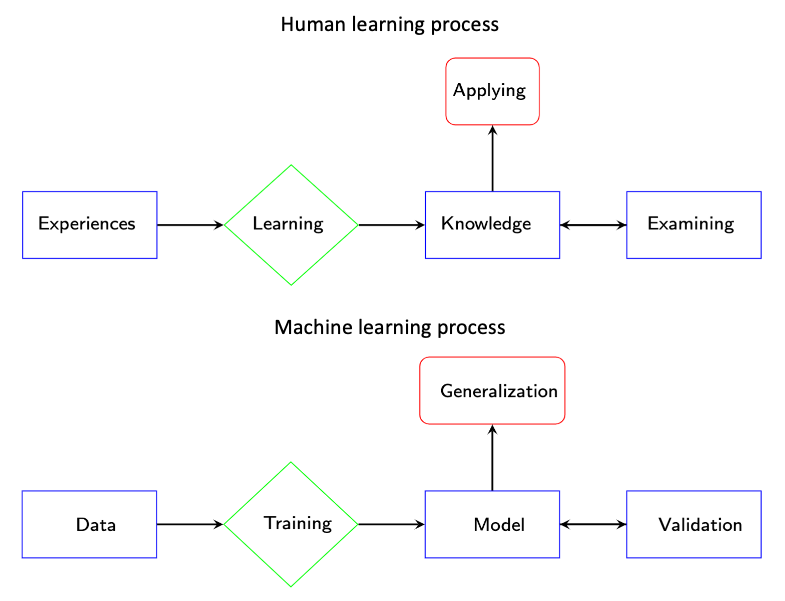3. Machine Learning Process
What is the process of machine learning like? First, let me tell you about some observations I have made about my sons. After they learned to speak, they began asking me all sorts of questions. For example, when we were at the supermarket, he would point at apples and ask me, ‘What’s this, Daddy?’ I just simply answered them, “It is an apple.” After a few times, they would change their questioning style from special to general, like, ’Daddy, is this an apple? In about half months, they turned into high-precision apple classifiers. They could even recognize that the logo on my laptop is also an apple! Amazing! I must emphasize that I never taught them how to recognize apples.

We can summarize the human learning process from the example of my sons learning to recognize apples. First, they would accumulate experience through observation and questioning. Once they had enough experience, they would begin their own learning and distill this into “knowledge.” Subsequently, they would use general questions to validate their knowledge. Finally, they would use their validated knowledge to identify the Apple logo. This human learning process is summarized in the following figure (up).
In fact, if we just change the names of the components, this is also the process of machine learning. For computer programs, “experience” is essentially “data”, “learning” involves “training” with algorithms, for example proceptron algorithm, and the “knowledge” distilled is a type of “model”. We call the “self-exam process” as “validation” and “applying” it to new problems as “generalization”. The entire machine learning process is presented in the following figure (down). In this course, we focus on “training” and “validation” steps. For “training” step, we introduce several basic and fundamental algorithms for linear models and discuss several validation methods for “validation” step. See Figure below.

